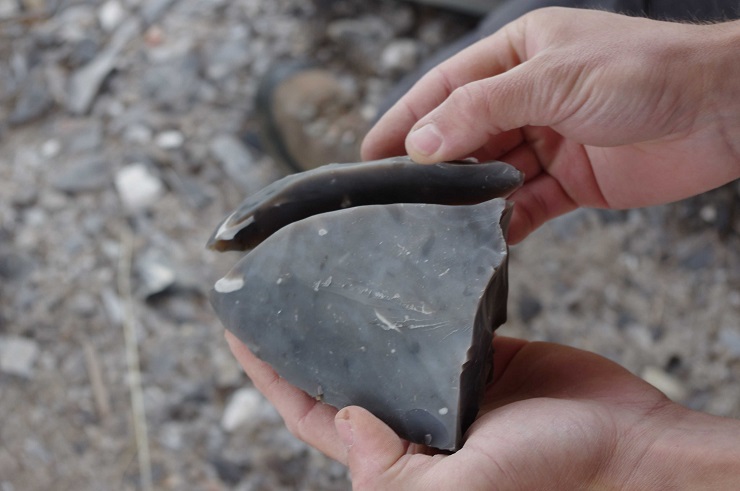The concept of a chipped stone industry is one that usually does not need to be explained within the context of archaeological publications. Using the accepted meaning it is understood as constituting a part of the findings, which comprises stone tools and blanks that arise from chipping rocks that have a general conchoidal fracture, also including the refuse that is generated during their production. Usually in our environment siliceous rocks can be found (i.e. flint, radiolarite, limnoquartzite), backed-up by alum and porcellanite and also by others. Their extraction and distribution is one of the most important issues in regard to archaeological research, which often, however, brings about more doubts than it does specific facts.
Amongst the various techniques for chipping stone dominant in the period of Neolithic monitored was the blade technique, though its origin is already documented as being in the Upper Palaeolithic. It primarily consists of chipping the blades and the flakes away from the prepared cores, either directly or using a mediator to ensure that the strike is more precise. Distinguishing between blades and flakes is a basic given only by a certain degree of preponderance of length over width. The blanks, that were prepared in this manner, were additionally processed by retouching the final tools including the scrapers, the sidescrapers, the drills and the diggers. Blade blanks and flakes that have a cutting edge or fragments of them were also used independently, without any additional treatment, specifically for equipping them with handles to form knives or sickles. Handles have probably also been attached to the scrapers and the other tools. Proof of this in our conditions is represented primarily by the remnants of sealant originally retaining stone segments in the handle that was made of the organic material that was not preserved. In areas where there is a greater degree of preservation of these materials it is seldom possible to find complete tools.
|
|
| Good job! A successfully chipped blank – the blade – from the preformed core. |
|
|
| The blade blanks were additionally used for producing a variety of tools, such as drills, for example. |
Want to learn more?
- Gould, R. A., D. A. Koster, and A. H. L. Sontz. 1971. The Lithic Assemblage of the Western Desert Aborigines of Australia. American antiquity 36/2:149-169.¨
- O'Connell, J. F. 1974. Spoon, knives and scrapers: the function of yilugwa in central Australia. Mankind 9: 189–194.
- Oliva, M. 1984. Typologické, chronologické a sociální aspekty ŠI. In Těšetice-Kyjovice. Starší stupeň s MMK, ed. E. Kazdová, 212-231.
- Oliva, M. 2010. Pravěké hornictví v Krumlovském lese. Vznik a vývoj industriálně-sakrální krajiny na jižní Moravě. Brno: Moravské zemské muzeum.
 Archeologické 3D virtuální muzeum
Archeologické 3D virtuální muzeum

.png)

